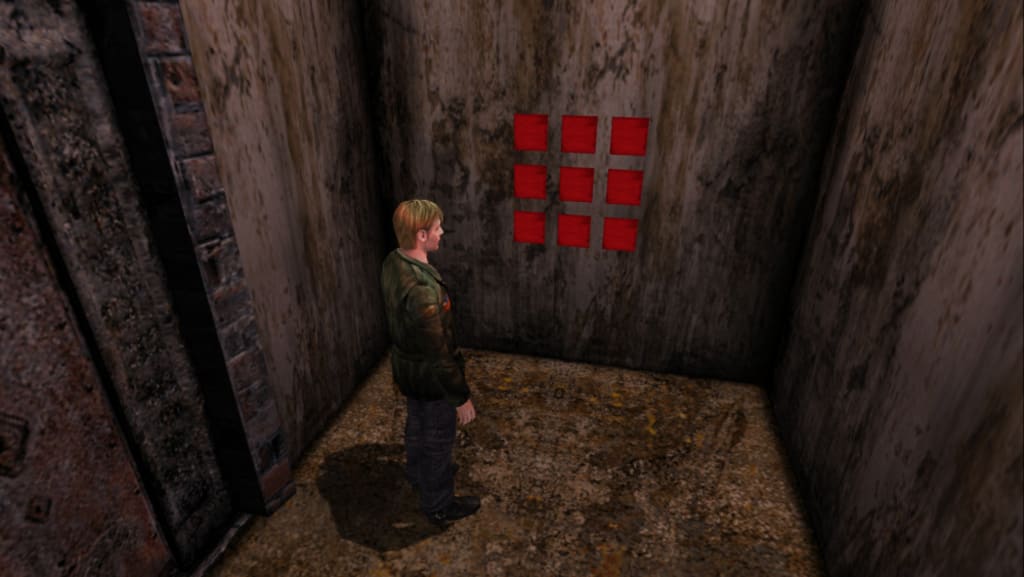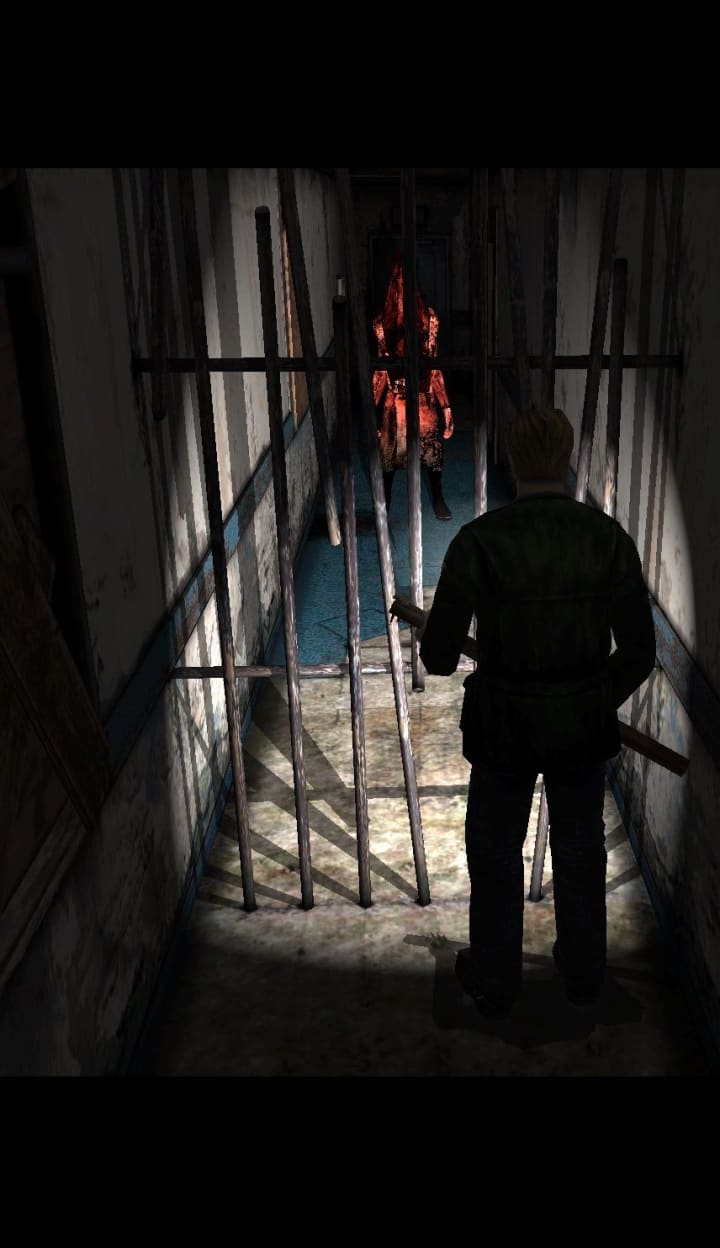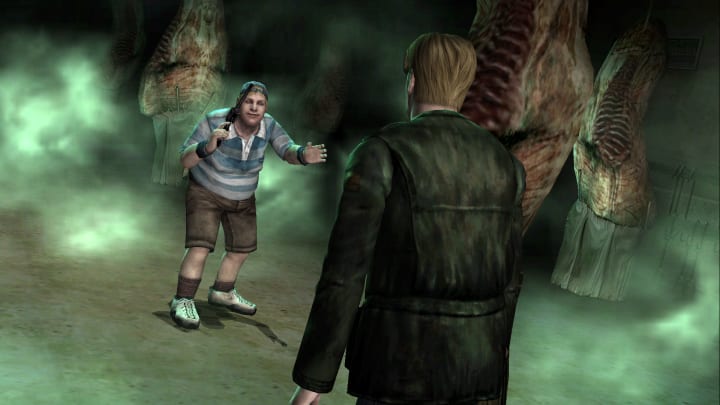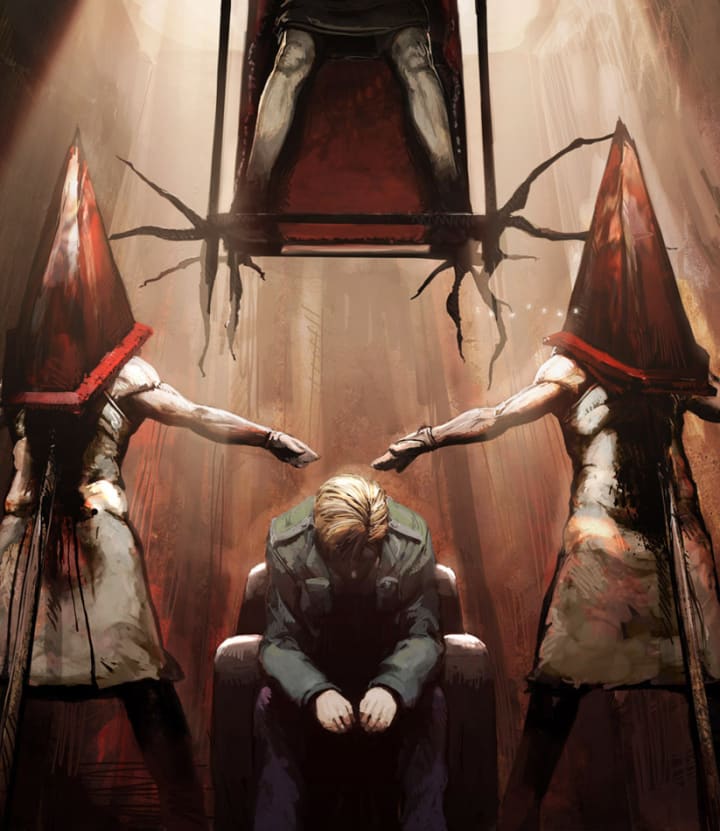
What it is about this game that makes players return to it again and again? Why do players still hold this game in high regard as not only the best horror video game, but the best video game of all time? What is it about this game that frightens you, depresses you, disturbs you, and haunts you? And why, after you turn off the PC or console after finishing the game, does the story resonate in your mind so vividly?
The answer is that there is no right answer. You interpret the symbolism of the game for yourself, and make your own conclusions. The creators intended for many plot points to be ambiguous, left up to player interpretation. Is James an unfortunate man who had to make a heart-breaking decision, or is he a murderer that selfishly killed his wife for shallow reasons? Is Laura a real child or is she another manifestation of James’s mental torment? Does Pyramid Head only exist for James?
The game’s content isn’t for the weary, handling topics you wouldn’t expect a video game to cover. One of the main concepts is grief, specifically the grief of losing a significant other. There are aspects of the story that align with the touted “5 Stages of Grief,” introduced by Kubler Ross in the latter part of the 20th century. The stages listed are: Denial, Anger, Bargaining, Depression, and Acceptance. Not all the stages will be encountered in that order, and some might not even occur at all. It all depends with the particular person grieving. But what does Silent Hill have to do with grief?

Silent Hill used to be a resort town, popular for a quaint, peaceful vacation spot. Then the events of the first Silent Hill took place, when a demonic cult’s actions caused the town’s once-benevolent power to become demented. Now, the town manifests a person’s inner fears through strange monsters, hellish landscapes, and disturbing visuals. James visited Silent Hill with his wife years before. when it was a vacation resort. His wife, Mary, became enamored with the peacefulness of the town, seen in flashbacks saying, “You know what I heard? This whole area used to be a sacred place.” Well, that very same town is sacred no more.
James Sunderland is a complicated character. He isn’t your conventional video game protagonist. In fact, you aren’t even given much information about him in the early game, other than his name is James and he’s looking for his dead wife in Silent Hill. The plot is discovered through exploring the town and encountering the strange sights of a haunted town. Rather than cut-scenes or in-game memos hastily offering exposition, you learn through visual cues, some more gruesome and deeply unsettling than others.
The first half of the game, James is in a state of denial. He is of two minds during his opening monologue: the one mind where Mary has been dead for three years, and the other wanting to believe Mary is alive and waiting in Silent Hill. Herein lies his cognitive dissonance, the part of his mind wanting to dissociate from his pain. He’s not the only one in a fugue state—He comes across a young woman in the graveyard leading up to the main town.
Angela Orosco befuddles many players during their first play-through of the game. She seems like she, too, is of two minds: one that acts defensive and unstable, another that's timid and child-like. She’s in denial about her past, believing her mother is in Silent Hill. Her insistence that she’s not lying gives an insight into her mental state—that she’s been accused of lying before.
James continues his trek through Silent Hill, being mysteriously pointed in a linear route of buildings and locations by maps. He doesn’t shy away from a fight, evidenced by his instinct to get a makeshift weapon to battle the first Lying Figure. This demonstrates his “fight or flight” response, choosing to fight the creature rather than run away. And this is the player’s choice as well, to fight or to run from the monsters.
James does many questionable things throughout the game, like sticking his hand into sinister, dark holes, and plunging said hand into a disgusting, visceral-filled toilet. He’s impulsive, tending to act before he thinks. James’s response to hearing a horrible, wailing noise in the apartments is to chase down the source of the noise. Doing such is the first ever appearance of Pyramid Head in the game. This moment is terrifying for first-time players… and for subsequent play-throughs as well. It’s a fear that doesn’t ease, more so because you don’t know what exactly the monster is. What is its motivation? Does it even have motivation? Is it just a puppet of the town’s evil forces? He isn’t introduced in a cutscene or an over-the-top jump scare. He just... stares at you from behind the bars, silently judging.

A popular theory is that Pyramid Head represents James’s guilt, though I think it’s a little more than that. Pyramid Head is a manifestation of James’s feelings of selfishness, recklessness, and darker impulses. He is an amalgamation of his guilt over having selfish thoughts, like craving sexual intimacy with his wife when she’s bedridden, and the guilt he has over suffocating Mary. He wants to believe his actions were solely euthanasia, putting Mary out of her intense suffering; however, there was an underlying motive: anger.
All three main characters of the game are experiencing anger. James felt angry towards Mary because she had become so cold as her sickness progressed. She was no longer the sweet, caring woman he married—She was bitter, miserable, and depressed. James says it himself after the Maria boss fight in the endgame: “No, that’s not the whole truth. The truth is… I hated you. I wanted you out of the way. I wanted my life back.” Angela’s anger is at her father for his unrelenting physical and sexual abuse, and her mother for her uncaring emotional abuse. She lashes out at James for white-knighting: “You think you can save me? Will you love me? Take care of me? Heal all my pain?... That’s what I thought.”
Eddie’s anger is a perfect example of what repressed anger can do, when it’s been held in for so long. He’s angry at the bullies in his life who tease him for being overweight. It’s theorized that Silent Hill isn’t as hellish to him as it is to James and Angela, but is a maniacal playground for him to enact revenge. James makes a big mistake confronting Eddie about his actions, but James is also a murderer. Sure enough, Eddie points this out, “Don’t get all holy on me, James. This town called you, too! Don’t you get it? You and me are the same!” In a technical sense, yes, they are both murderers, but each of them have entirely different motives. While there was an angry sentiment underneath, James killed his wife to end her suffering. Eddie, however, has become completely unhinged, killing indiscriminately. While he killed no one before he reached the town, he indicated signs of psychopathy, by shooting a man in the leg and killing a dog. He has no empathy left. Truly, Eddie is a warning for James and the player that anger is a dangerous emotion, and the people that have anger management issues need help before it’s too late.

So, what of the other characters? What about Maria? What stage of grief does she reside in? Bargaining with the stages of grief is when a person swears they’ll be worthy, if their loved one is returned to them. Commonly, this is proclaimed to a deity such as God (the Judeo-Christian “God," not Samael). So, James wanted his wife back. I can think of a few instances of bargaining within Silent Hill 2. After all, he came to this town to be with Mary again. So, the town gave him Mary… or at least, a woman that looks like Mary. Maria contrasts the characteristics of Mary, dressing provocatively as opposed to Mary’s conservative pink dress. Maria’s also sexually suggestive, seductive, and wanton, whereas Mary wasn’t so openly promiscuous.
However, as it is Silent Hill, there’s a caveat to Maria’s existence. She’s a creation of his mind, after all, a manifestation of his fears, thoughts, and memories. In a way, she’s a distraction, something to test James’s willpower toward his motives. And in one of the endings, he fails this test. In the Maria ending, James succumbs to his delusions, choosing to leave the town with Maria. She coughs as they leave the town, indicative that James is destined to repeat this whole ordeal.
Another ending deals with bargaining, but with a slightly more occultic twist. In the Rebirth ending, James gathers several occult items, and calls upon the “Old Gods” to resurrect Mary. We don’t see the final result, but I can only imagine it was horrible. Silent Hill is known for being “a town that takes all," not a town that gives. These Old Gods are not the same ones, when Silent Hill was a peaceful resort town. Perhaps this resurrection will be an attempt to spread Silent Hill’s darkness elsewhere in the world…
If you had only one word to describe this game, it would be depressing. The entire ending of the game is one big tearjerker after another. James plays the VHS tape, and reminds himself of his crime. The piano melody that plays perfectly encapsulates the heavy weight of that moment, when James has been made to understand what he has done. Laura enters the room, and James confesses to her that he killed Mary. After an emotional tirade, James is once again left in the room, alone. “The Mary you know isn’t here.”
After this scene, you discover that the hotel is actually badly water-damaged and crumbling around him. The Lakeside Hotel he was exploring before this moment had been another manifestation—The real hotel had burned down in a fire. The dilapidating walls and water represents his sorrow and his guilt. The music warbles as the rooms begin warping James all over the hotel. Nothing makes sense anymore. James encounters Angela for the last time in a burning stairwell. She reveals that she sees Silent Hill as a world full of fire. “For me, it’s always like this.” Her depression and anger are ongoing, not contingent on a single crime. She ascends the staircase, into the flames. Whether it takes her to hell or heaven is left up to player interpretation.
James continues going down into the basement, where it begins flooding. His ordeal isn’t done yet, he still has a final trial in order to pay for his sins. Right before entering a boss room, there are nine save points on the wall. Nine pieces of one giant red square, representing all the pieces of the plot he needed to gather before reaching this point. He’s forced to watch yet again, as Maria is skewered before his eyes by Pyramid Head. Two Pyramid Heads now converge on him, and James has to fight them for the last time in order to confront his guilt. He doesn’t get to kill the Pyramid Heads—They kill themselves once James deals enough damage. This denial of revenge is purposeful to show James that his punishment is not over. He must now contend with Maria/Mary.

All four main endings change the outcome of the rooftop scene. In three of them, Leave, In Water, and Rebirth, Maria is dressed as Mary, leaning out of a window. It’s a taunt. The final boss in these predicaments is Maria—The succubus hidden under Mary’s face turns into her true form, a demented flying, bedridden creature, that summons moths to swarm James. Dealing enough damage, she cries out, falling to the grate floor. Now, James must deliver the final blow, echoing the murder of his wife.
The Leave ending would be acceptance. James and Laura leave Silent Hill together. It’s unknown what happened to them years later, as no credible source has labeled any of the endings as canonical. When you receive the In Water ending, James drives his car into Toluca Lake, wishing to be with Mary in death. He has succumbed to his depression and taken his own life. Rebirth, as I said, is an expression of bargaining, begging the Old Gods to revitalize Mary. Maria is an ending of denial, in which James chooses a delusion over coming to terms with his grief. There’s also a hint of anger when Maria coughs. “You’d better do something about that cough.” It’s a sinister, telling indication that history is to repeat itself.
If you’re expecting serious analysis of the Dog Ending and UFO ending to fit any of these categories, uh, sorry. I can give stupid analyses: The Dog Ending is obviously evidence that James hates dogs and thinks they’re evil. How dare you, James! And the UFO Ending is evidence of alien-sightings in Silent Hill. I want to believe.
I hope you enjoyed this little analysis of Silent Hill 2. Perhaps I'll do some other Silent Hill analyses. Anything I say is not in anyway canonical, they are my own interpretations of the game. The Silent Hill games (unfortunately) still belong to Konami and the original creators. No copyright infringement intended.
About the Creator
CD Turner
I write stories and articles. Sometimes they're good.






Comments
There are no comments for this story
Be the first to respond and start the conversation.